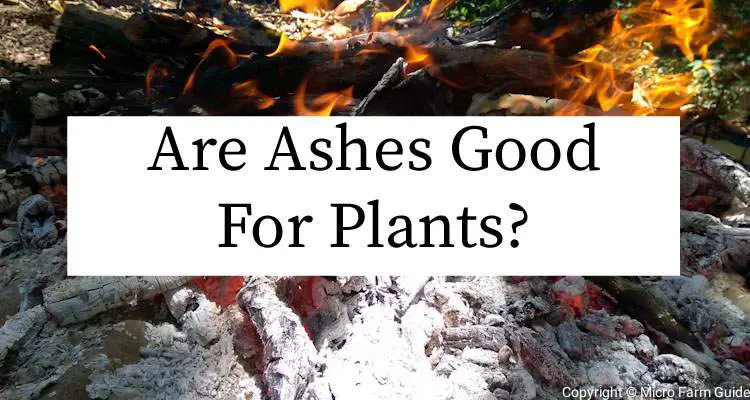For centuries, people have used wood ash in their gardens, believing it can help improve their soil, increase their yields, and even control certain pests.
However, in recent years, several scientists and seasoned gardeners have warned against using ashes on agriculture lands.
So, which is it? Are ashes good for plants, or have we been harming our lands with this practice?
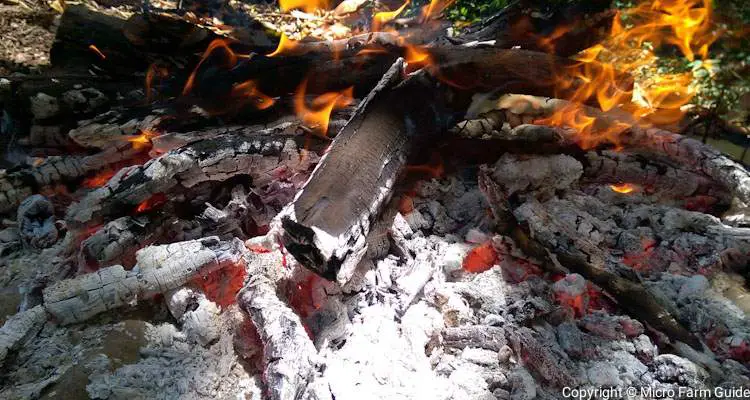
In this article, we’ll take a closer look at ashes and discuss whether they can improve soil fertility.
But before we dive into the details, we need to clarify which ashes we’re talking about, since they are not all created equally.
3 Most Common Types of Ashes
Ashes can come from different sources, such as burning wood, charcoal, or even cigarettes. Each type of ash has its own characteristics that can influence your plants differently. So, let’s kick things off by looking at the most useful of the three.
1. Wood Ashes
First, wood ash is what remains after burning wood. This is the type of ash you’ll find in a fireplace, or firepit.
Wood ashes contain essential nutrients like calcium, potassium, and phosphorus, which is needed by flowering plants, especially when they are fruiting.
For example, many farmers sprinkle wood ash around tomatoes and peppers to help prevent blossom end rot.
2. Charcoal Ashes
Charcoal ashes are similar to wood ash but may contain slightly different nutrients, based on the original material — wood, bone, etc.
However, the processed charcoal briquettes used for grilling usually contain binding agents, which may be unsafe for plants.
So, while the ashes from “natural” charcoal are perfectly safe to use in your garden, you should double check the ingredients of the briquettes before adding their ashes to your soil.
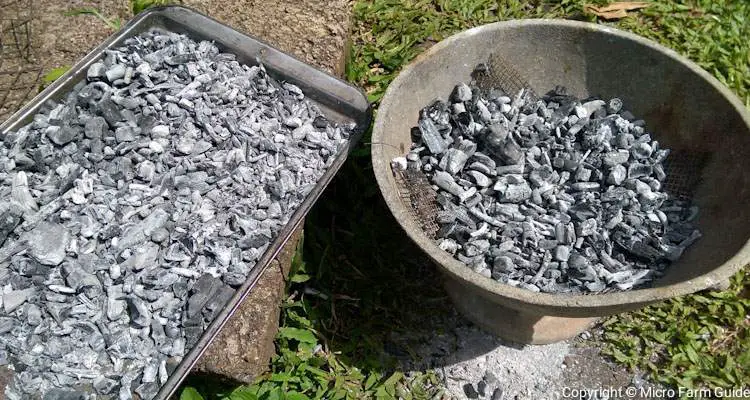
3. Cigarette Ashes
Cigarette ash is in a league of its own. Most farmers would not even consider adding it to the soil in the first place.
Using cigarette ashes can introduce toxins to the soil, harming your garden rather than helping it.
How to Apply Ashes to Your Garden
Now that we’ve explored the different types of ashes, I’m sure you’ll agree that wood ash is the most suitable type for gardening.
But you still need to ensure your ashes are free from contaminants like metal, plastic, or chemicals, as these can harm your plants.
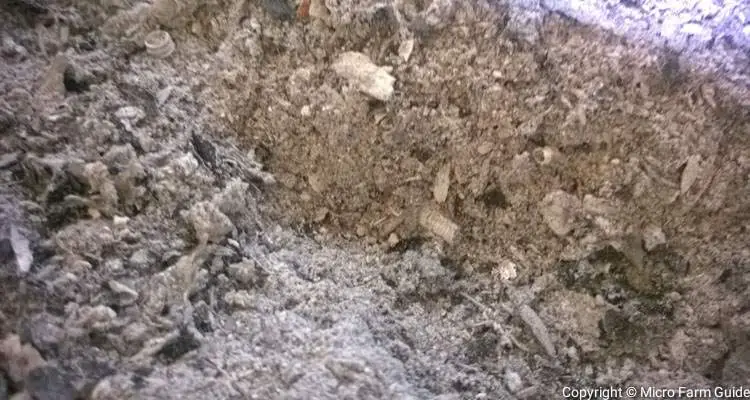
You can sprinkle a thin layer of ashes around your plants. This will slowly release nutrients into the soil.
Ideally, you should apply ashes at the beginning of the growing season. But avoid applying it during heavy rains, and remember to use it sparingly.
Remember to use ashes sparingly as too much can alter the pH of your soil and harm your plants.
Alternatively, you can mix ashes with compost to help enrich it while balancing the pH of the slightly acidic material.
That said, ensure you store any excess ashes in a dry place, away from moisture, since moist ashes can become less effective.
You can also mix ashes with water to make a liquid fertilizer.
However, for best results, you should consider mixing it with fermented rabbit urine, which creates a potent, balanced fertilizer.
Precautions and Safety Tips
Ash is a highly alkaline, dehydrant with fine particles that can irritate your eyes, hands, and lungs.
So, when working with ashes, you must be careful to prevent prolonged inhalation and contact with your skin.
Remember, we’re talking about the same substance that can kill aphids by drying them out.
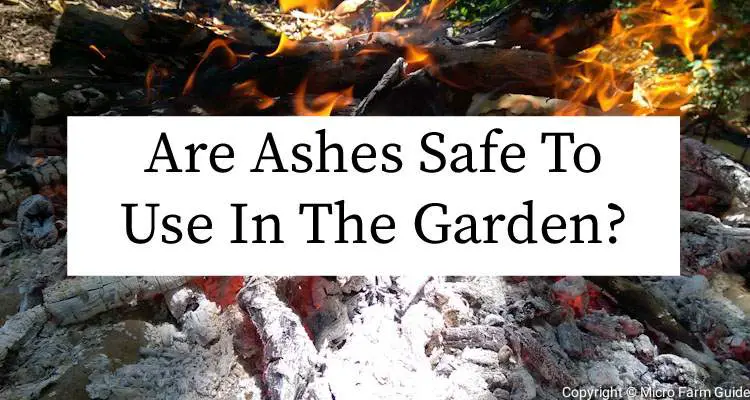
That said, applying too much ash at once can raise the pH of the soil excessively, making it unsuitable for most plants.
So add ashes sparingly to avoid sudden shifts in soil acidity, which can cause more harm than good.
Environmental Impact and Sustainability
As mentioned, adding ashes to the soil can influence its acidity, which can also affect the local ecosystem, including beneficial microorganisms.
As a result, while ashes can be useful, you should first consider the impact of using ashes on the broader ecosystem.
For instance, avoid dumping large quantities of ashes in or near bodies of water or areas where they can leach into the environment.
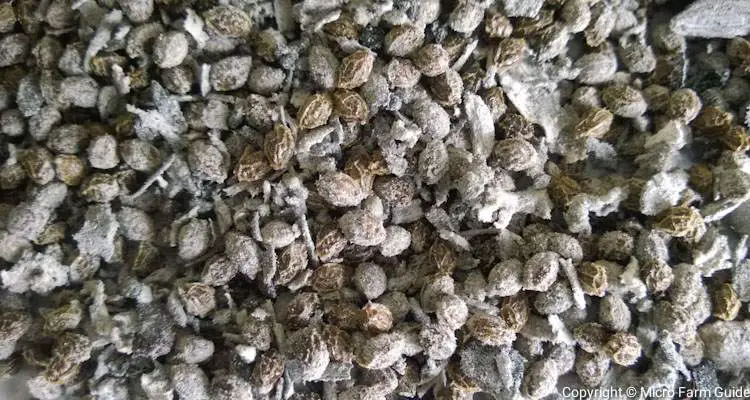
Instead, you can consider alternative uses for excess ashes, such as soap making, cleaning, and pest control.
That said, you’ll have to be careful to use ashes sparingly to prevent harm to the soil, wildlife, and the environment as a whole.
Final Thoughts
As responsible gardeners, we should explore sustainable practices and make choices that benefit our gardens and the environment.
In the article, we’ve discussed the types of ashes and their possible uses and environmental implications.
While there are some benefits to using wood ash, we should consider other eco-friendly gardening practices that reduce the need for soil amendments altogether.
Feel free to reach out if you have any questions or need more tips. Or you can visit our Gardening Page to learn about other helpful gardening techniques.
Related Questions
1. Are ashes good to put around plants?
Yes, ashes can be suitable for plants. They provide essential nutrients like calcium and potassium. However, if used in excess, they can negatively affect the health of the soil, plants, and the environment.
2. Which plants like ash?
Flowering and fruiting plants like tomatoes, cucumbers, watermelon, and roses like ash. It provides essential nutrients such as calcium and potassium, which helps to produce more vibrant blooms, tastier fruits, and healthier plants.
3. Is ash a good fertilizer?
Ash can be a good fertilizer for some plants, especially when mixed with a nitrogen source such as fermented urine. However, it’s essential to use it sparingly to avoid harming your plants.
4. What are ashes good for?
Ash enriches garden soil, protects stored seeds, and can help to manage pests. It’s well-known for providing nutrients like calcium, potassium, and phosphorus. As well as protecting plants from soft-bodies pests such as aphids.
References
University Of Georgia Extension. Best Management Practices for Wood Ash as Agricultural Soil Amendment. extension.uga.edu. Accessed October 2023
University of Saskatchewan. Using Wood Ash In The Garden. gardening.usask.ca. Accessed October 2023
Wisconsin Horticulture. Using Wood Ash In The Home Garden. extension.wisc.edu. Accessed October 2023
University Of New Hampshire. Guide to Using Wood Ash as an Agricultural Soil Amendment. extension.unh.edu. Accessed October 2023

